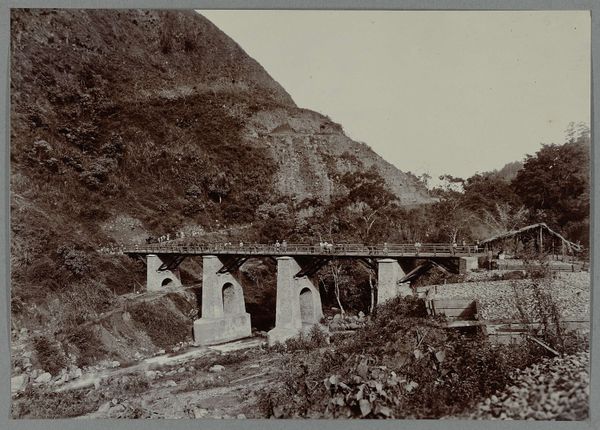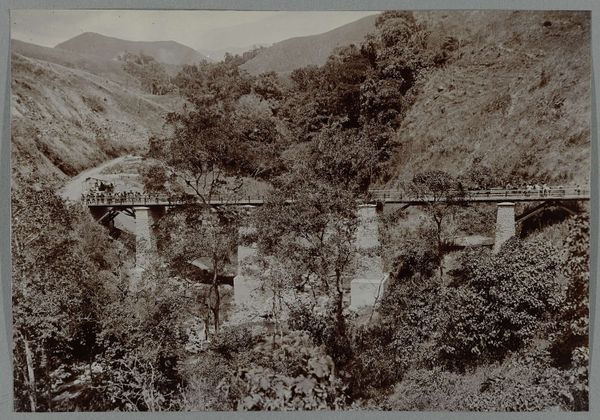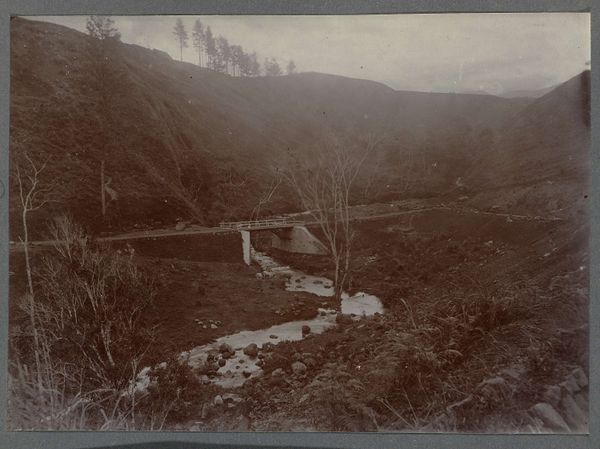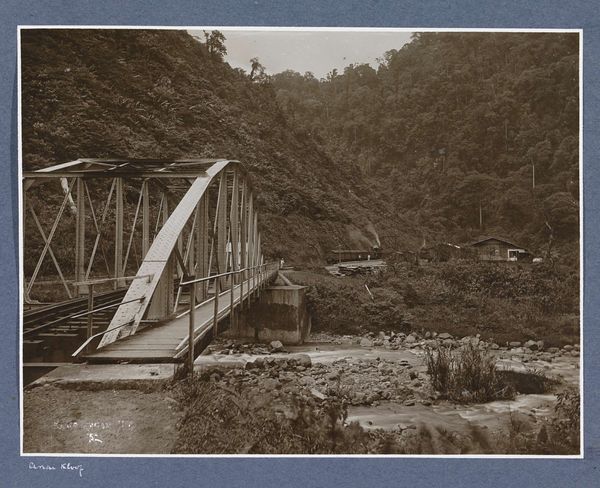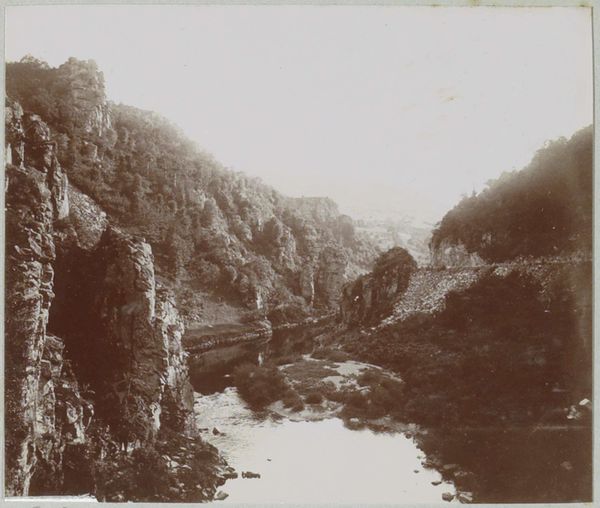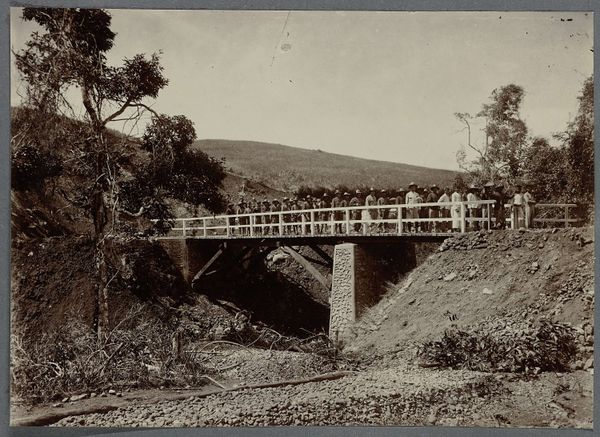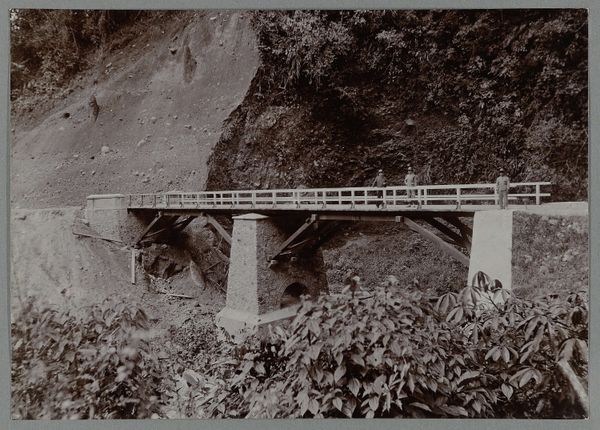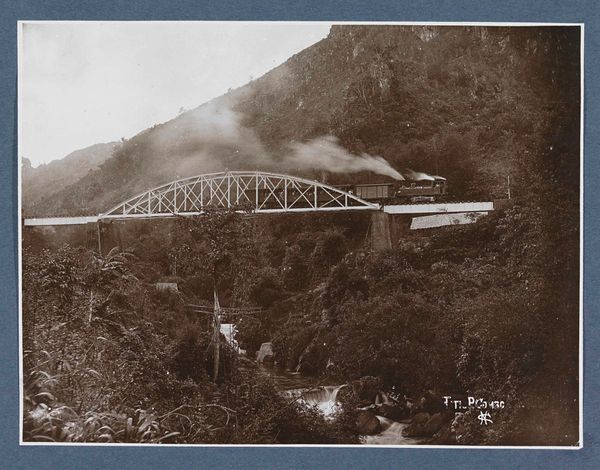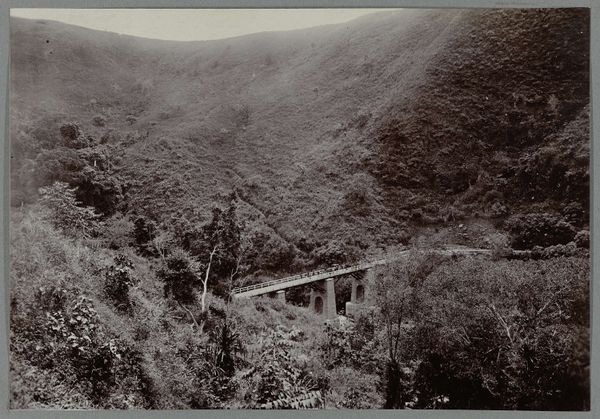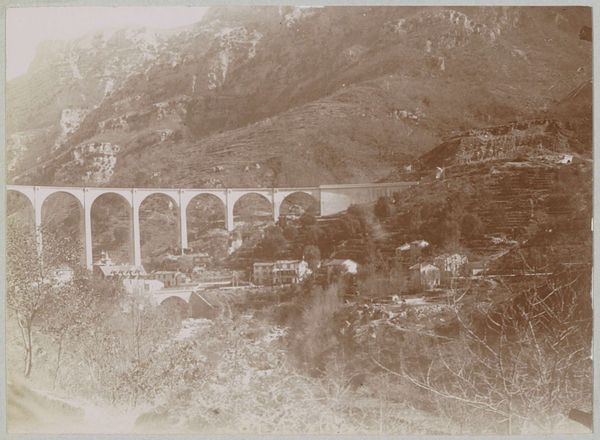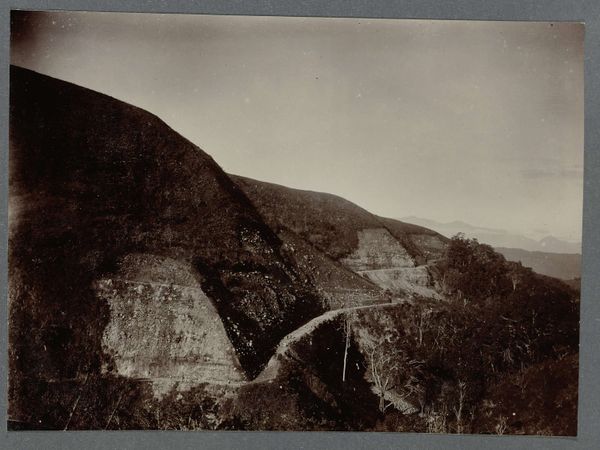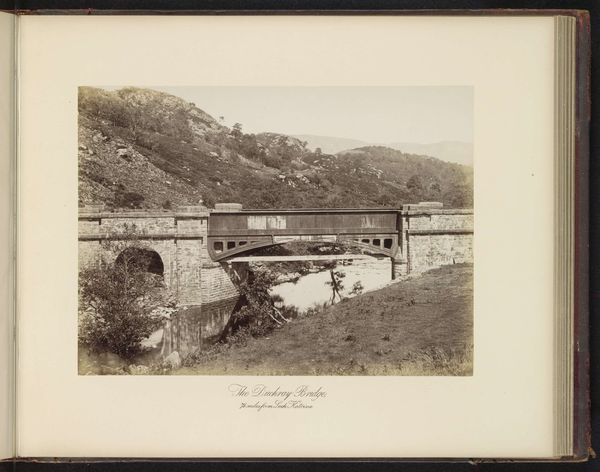
print, photography
# print
#
landscape
#
photography
#
realism
Dimensions: height 138 mm, width 200 mm
Copyright: Rijks Museum: Open Domain
Curator: Immediately, this photograph strikes me with its quiet monumentality. It has a stillness, a considered quality that speaks to a time of significant transition. Editor: Yes, it does. This is an anonymous photograph, taken in 1911, titled "Completed Bridge over the Woih ni Enang." It's a rather straightforward, yet powerful, documentation of infrastructure meeting nature. Curator: Bridges always resonate deeply. They symbolize connection, transition, and the bridging of divides, both literal and metaphorical. The figures atop seem so small against the immense landscape and structure; perhaps their presence represents both progress and human hubris? Editor: The building of a bridge such as this at that time almost certainly represented the incursion of colonial influence, an imposing Western "advancement" driven right through the local landscape, economy and culture. We see what appears to be a crowd gathered on it, likely local workers or community members experiencing this marvel. Curator: The crowd is the image's fulcrum between visual and sociohistorical themes; in terms of cultural symbols, the bridge is more than crossing an obstacle – it’s also altering, potentially erasing the natural barriers to movement, imposing a grid and modern temporality over a traditional spatial experience. What are the psychological implications of this accelerated interaction? Editor: I agree; such constructions reshape not only physical landscapes but also the social order. Photography's role here is complex. While seeming objective, the camera's gaze carries political weight; a record like this circulates certain ideas about "progress," downplaying its impact. Who built this bridge? What were their stories? Curator: The materiality of this scene reinforces the message; we have the imposing, constructed permanence of stone and metal imposed on organic forms that appear fragile. Editor: Right, so in summary, the bridge embodies more than just physical structure— it represents systems of power and control at the time. Curator: Exactly. I find this simple photograph of something practical opens to reveal complex narratives of innovation, social transformation, and perhaps something even tragic.
Comments
No comments
Be the first to comment and join the conversation on the ultimate creative platform.
